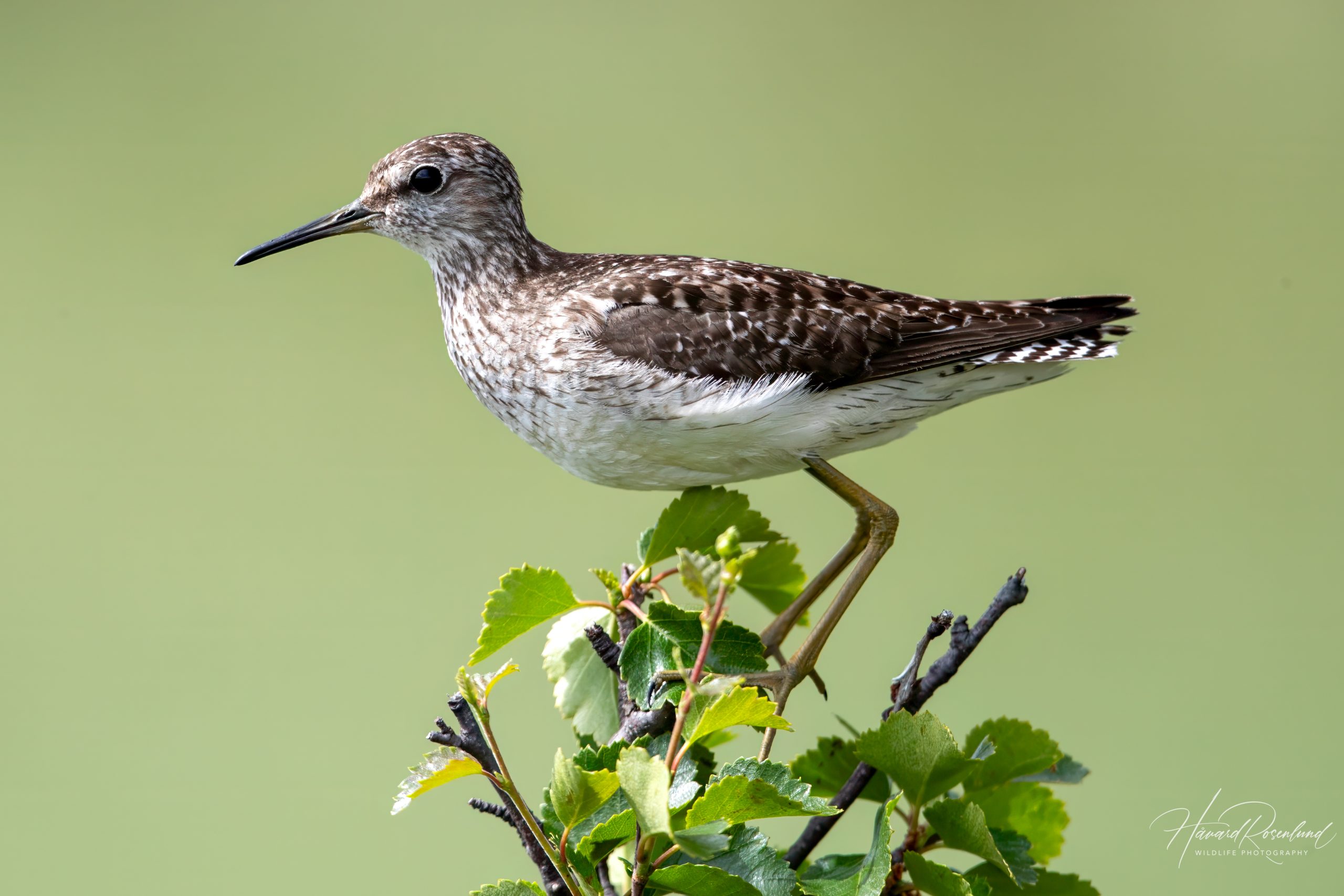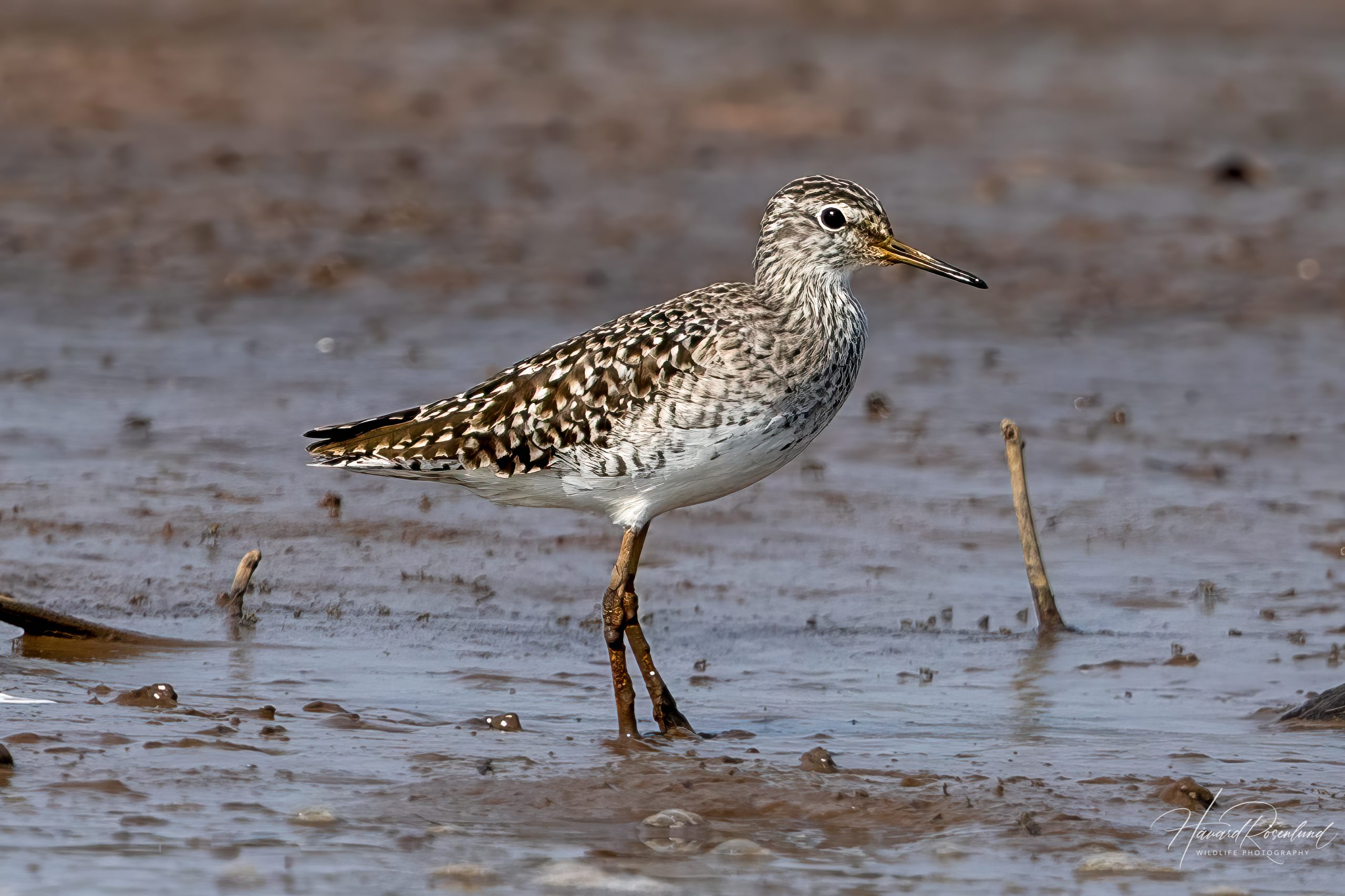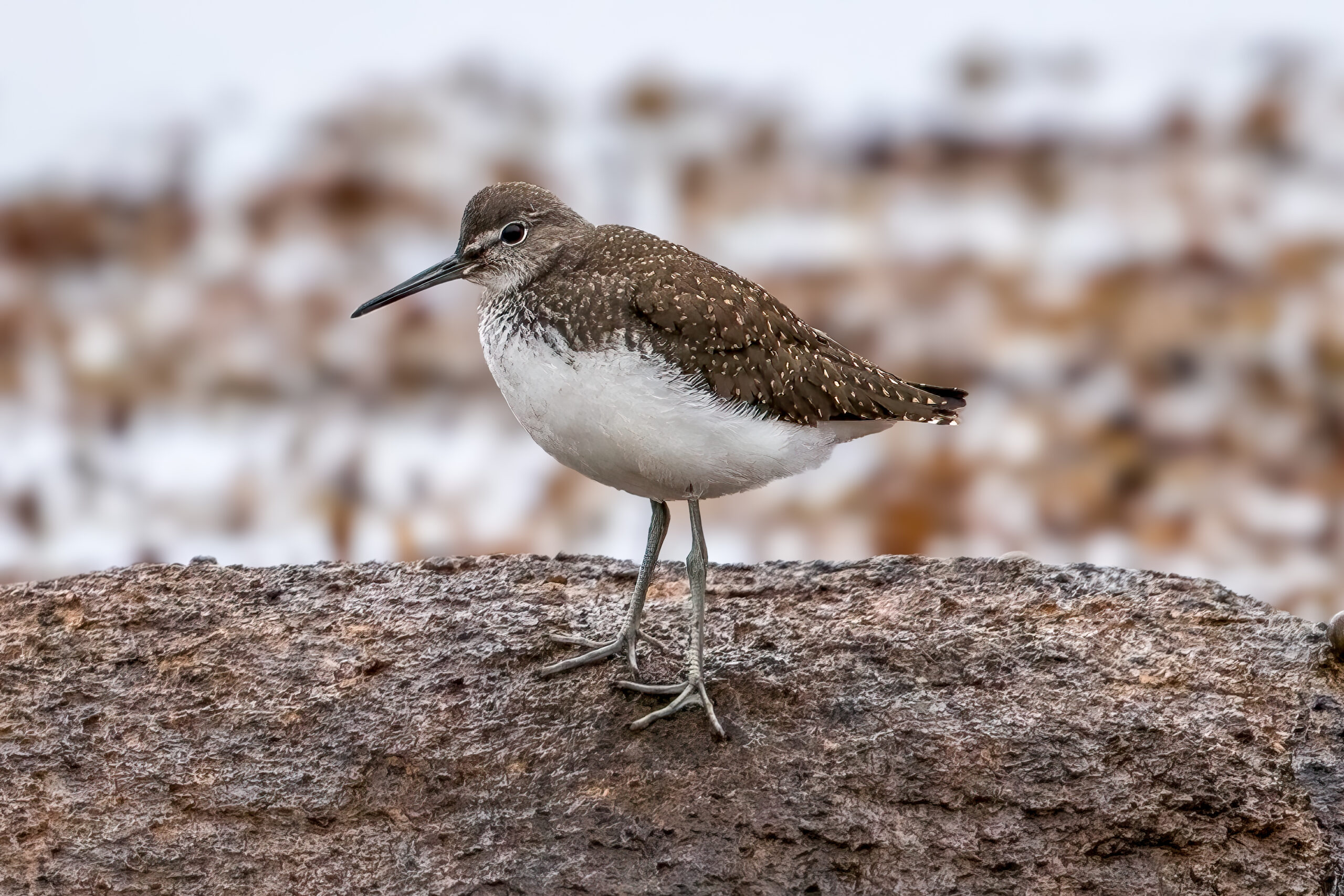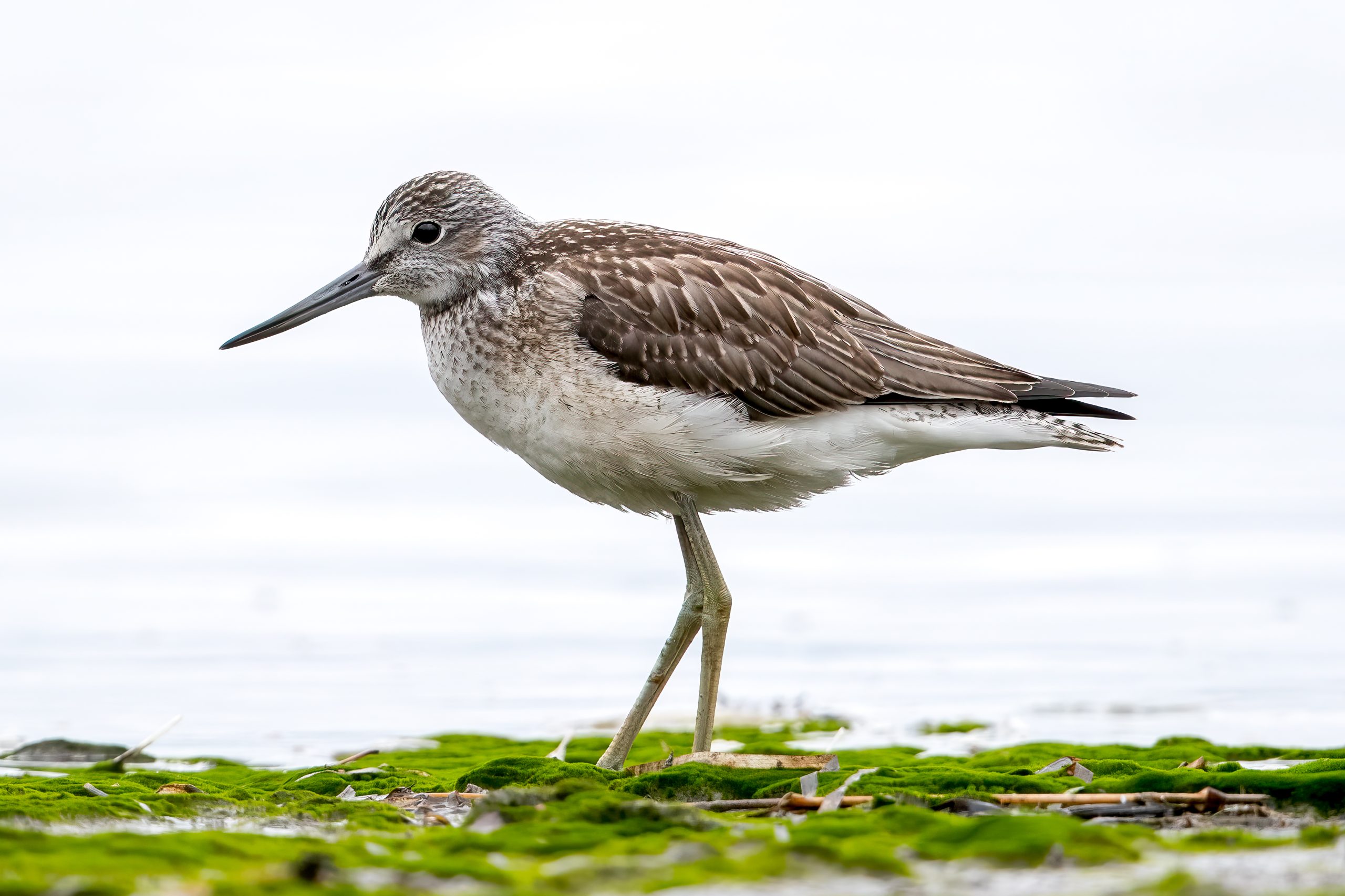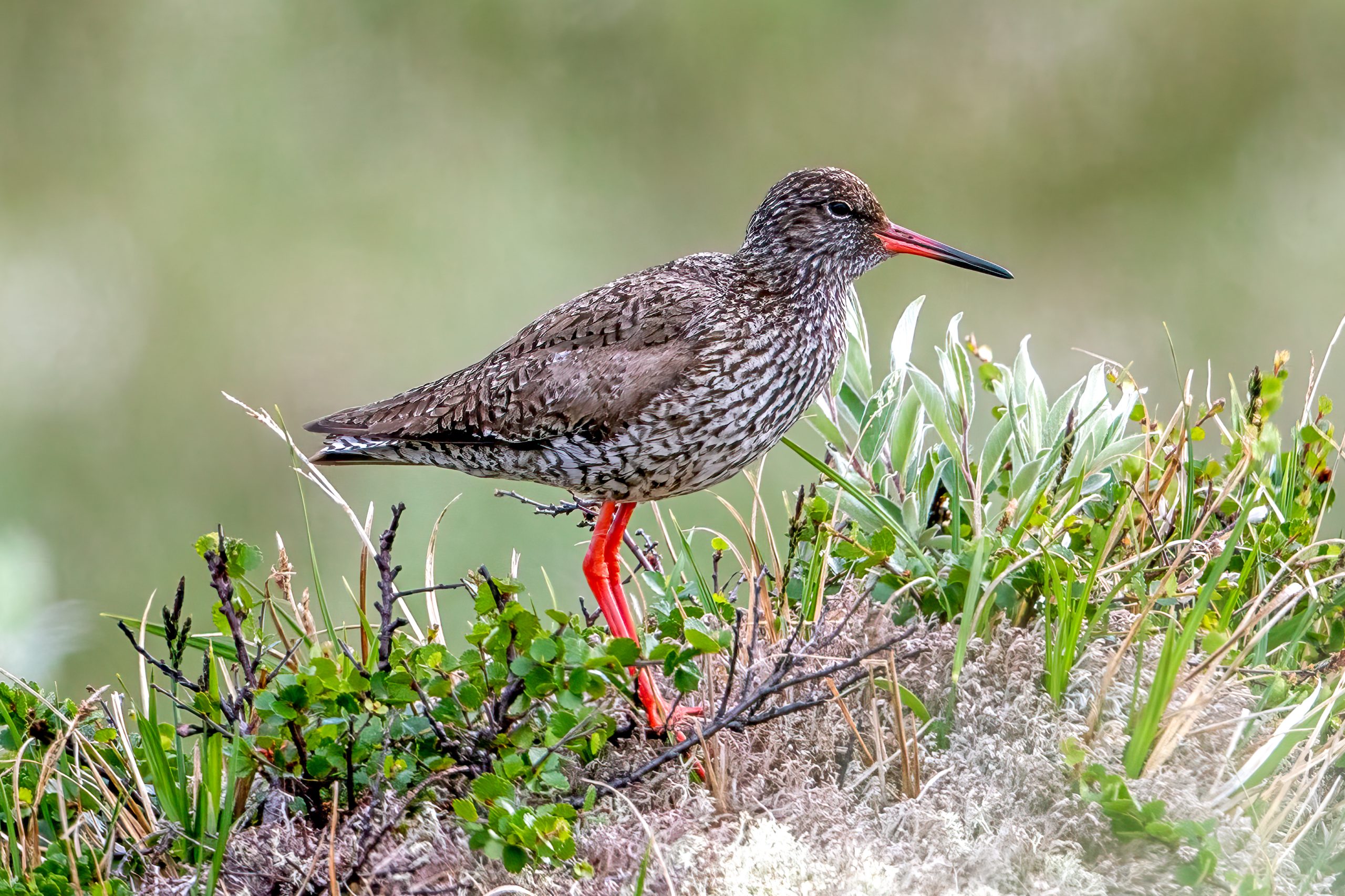Description
The wood sandpiper (Tringa glareola) is a small wader with a broad range, breeding in the northern regions of Europe and Asia, specifically in the taiga and forest-tundra zones. During migration and wintering, it is found in sub-Saharan Africa, South Asia, and Australia. It measures around 19-23 cm (7.5-9.0 in) in length with a wingspan of 54-57 cm (21.3-22.4 in). It can be identified by its medium-length greenish yellow legs, brown upperparts with light spots, and a white belly. One distinguishing feature is its light eyebrow stripe that contrasts with its brown head. The wood sandpiper is similar in appearance to the green sandpiper (Tringa ochropus), but can be differentiated by its more slender build, its longer and more yellow legs and the less distinct white rump. The brown chest and white belly is also less contrasting on the wood sandpiper than on the green sandpiper.
Diet & habitat
Wood sandpipers inhabit freshwater wetlands, including marshes, swamps, and flooded fields. They are commonly seen around the edges of freshwater bodies, where they forage for food. Their diet primarily consists of insects, spiders, mollusks, and small crustaceans, which they pick from the water’s surface or mudflats. Wood sandpipers employ a distinctive feeding technique, often probing into the mud with their bills and making swift, darting movements to catch prey.
Migration
The wood sandpiper is a long-distance migrant. It undertakes remarkable journeys from its breeding grounds in the northern taiga and tundra to wintering sites in tropical and subtropical regions. Migration typically occurs in two main periods: from July to November during the southward migration, and from March to May for the northward return. These birds travel thousands of kilometers, often stopping at wetlands along the way to rest and refuel.
Nesting
The breeding season for wood sandpipers occurs from May to August. They prefer nesting in marshy or boggy areas within the taiga. The nest is usually a shallow scrape on the ground, lined with grass and moss. The female lays 3-4 eggs, which are incubated by both parents for about 22-23 days. After hatching, the chicks are precocial, leaving the nest shortly after birth to forage with their parents. Fledging occurs approximately 25-28 days later.
Status
The wood sandpiper is listed as least concern by the IUCN Red List. Despite being widespread and relatively common, they face threats from habitat loss due to wetland drainage and degradation. Conservation efforts focus on protecting wetland habitats crucial for their breeding and migratory stopovers.




